mytest
Books etc. by ARUDOU Debito (click on icon):
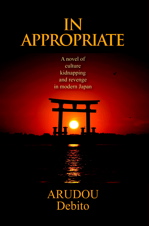
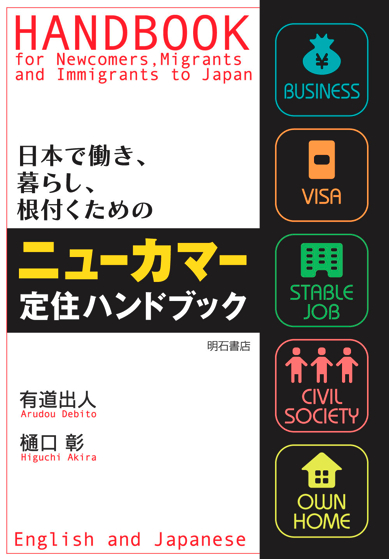
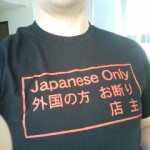

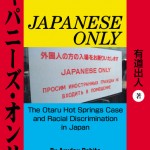
![]()

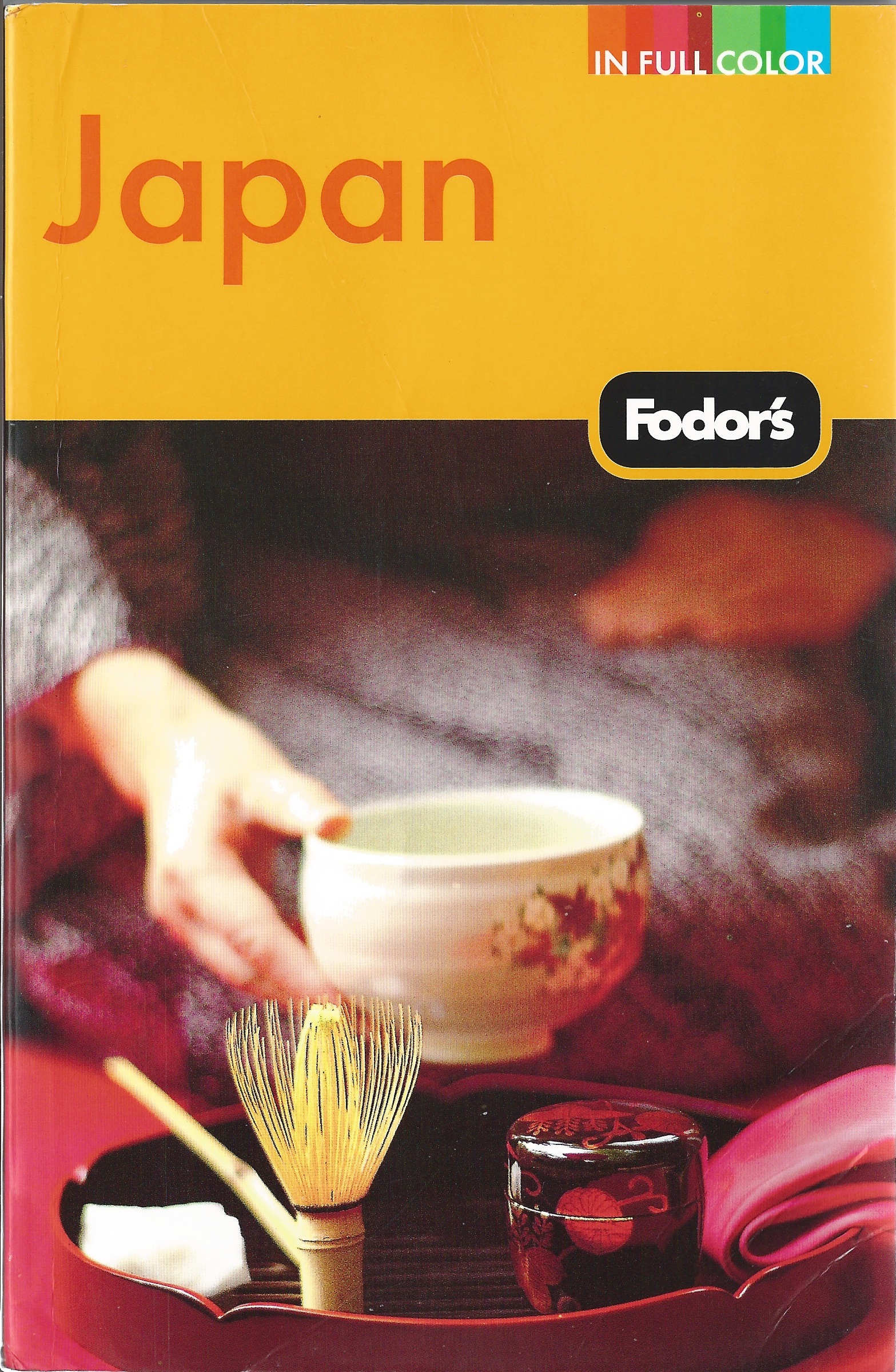
UPDATES ON TWITTER: arudoudebito
DEBITO.ORG PODCASTS on iTunes, subscribe free
Hi Blog. Here’s something quite indicative about the conservatives in Japan. As I will be alluding to in my next Japan Times column (due out October 2), there is an emphasis on making sure “hopes and dreams” are part of Japan’s future. Fine, but for Japan’s conservatives, fostering “hopes and dreams” means obliterating things like the shameful bits of Japan’s past (which every country, doing an honest accounting of history, has).
For Osaka Mayor Hashimoto (who just launched his ominously-named “Japan Restoration Party”), that means killing off Japan’s only human-rights museum (which, when I visited, had a corner devoted to the Otaru Onsens Case). Because talking about how minorities in Japan combat discrimination against them is just too disruptive of Japan’s “dreamy” national narrative. Read on. Arudou Debito
/////////////////////////////
Out With Human Rights, In With Government-Authored History: The Comfort Women and the Hashimoto Prescription for a ‘New Japan’
By Tessa Morris-Suzuki
(Recommended citation: Tessa Morris-Suzuki, “Out With Human Rights, In With Government-Authored History: The Comfort Women and the Hashimoto Prescription for a ‘New Japan,’” The Asia-Pacific Journal, Vol 10, Issue 36, No. 1, September 3, 2012.)
Hopes and Dreams
They exist all over Japan, like tiny sparks of light, flickering and fragile, but somehow surviving against the odds: the peace museums, the reconciliation groups, the local history movements that work to address problems of historical responsibility neglected or denied by national politicians. As Kazuyo Yamane notes, according to a UN survey, Japan has the highest number of peace museums of any country in the world (Yamane 2009, xii). But the heritage created at the grassroots by ordinary Japanese people is constantly under threat from the hostility of nationalist politicians and sections of the media: and never more so than today (see Chan 2008; Morris-Suzuki, Low, Petrov and Tsu 2012).
Among the sparks of light is Osaka’s Human Rights Museum, also known as Liberty Osaka.
Founded in 1985, Liberty Osaka is Japan’s only human rights museum. It features displays on the history of hisabetsu buraku communities (groups subject to social discrimination), the struggle for women’s rights, and the stories of minority groups such as the indigenous Ainu community and the Korean minority in Japan. An important aspect of the museum is its depiction of these groups, not as helpless victims of discrimination, but rather as active subjects who have fought against discrimination, overcome adversity and helped to create a fairer and better Japanese society. By 2005 more than a million people had visited the Liberty Osaka. (See the museum’s website (Japanese) and (English).)
Today, the museum faces the threat of closure. The Osaka city government has until now provided a crucial part of themuseum’s funding, but the current city government, headed by mayor Hashimoto Tōru, has decided to halt this funding from next year, on the grounds that the museum displays are ‘limited to discrimination and human rights’ and fail to present children with an image of the future full of ‘hopes and dreams’ (Mainichi Shinbun 25 July 2012)
Rest of the article at:
http://japanfocus.org/-Tessa-Morris_Suzuki/3818
A message to that effect from Liberty Osaka, then the Mainichi Shimbun articles being referred to, follow for the record:
===========================
お知らせ
4月末から大阪市長は8月から当館への補助金打ち切りを表明し、皆様方にはご心配をおかけしています。大阪市は6月2日の公開ヒアリングにおいて、来年度の補助金打ち切りを前提としつつ、8月から約20%削減して補助金を組む方針を示しました。たいへん厳しい状況ではありますが、当館は来年3月まで事業と運営をおこなってまいります。来年4月からの事業と運営のあり方については関係諸機関・団体と協議してまいりますので、引き続きご支援・ご協力いただきますよう、よろしくお願い申し上げます。
2012年6月8日
大阪人権博物館
===========================
大阪人権博物館:存続の危機 府市の補助金打ち切り 問題知る場なくせば差別は消える?
毎日新聞 2012年07月25日 東京夕刊
http://mainichi.jp/feature/news/20120725dde018040097000c.html
国内で唯一の人権に関する総合展示施設、大阪人権博物館(リバティおおさか、大阪市浪速区)が、存続の危機に直面している。年間1億4000万円の収入のうち約85%を占めていた大阪府・市の補助金が、今年度で打ち切られるためだ。行政が人権問題についての施設費用をまかなう意味と、補助金打ち切りの背景を、識者らの言葉から探った。【鈴木英生】
同博物館は、1985年開館。部落差別を筆頭に、アイヌ▽在日コリアン▽沖縄▽女性▽ハンセン病▽薬害エイズ−−など、さまざまな問題を取り上げる。展示資料は約2000点。文書やパネルを並べるだけでなく、実物大で再現したアイヌのチセ(家)、沖縄や朝鮮半島などの民族衣装が着られるコーナーなどもあり、多面的だ。
橋下徹・大阪市長と松井一郎・大阪府知事は今春、展示が「差別と人権に縛られている」「子供が夢や希望をもって将来像を描く施設になっていない」などとして、補助金打ち切りを決めた。
博物館の関係者らは、補助金打ち切りを「人権教育の危機」と憤る。以前は橋下市長自身、「僕は、人権という教育は絶対必要だと思ってますので、ここはもう崩さず」(府知事時代の2009年に博物館リニューアルを求めた際の府議会での発言)などと語っていた。
そもそも人権問題の展示施設を、行政が支えてきたのはなぜか。人権博物館の元理事長でもある元木健・大阪大名誉教授(社会教育学)は「『社会教育法』で説明ができます」と話す。
一般的に、博物館の設置運営は、同法に基づく社会教育の一環とされる。同法は、国や地方公共団体が「市民の自主的な社会教育活動のための環境醸成」をしなくてはならないとする。「同法は、博物館など施設の設置運営どころか、集会の開催や資料の作成・配布までも、行政の責務としています」(元木さん)
ENDS
===========================
大阪人権博物館:存続の危機 府市の補助金打ち切り 問題知る場なくせば差別は消える?
毎日新聞 2012年07月25日 東京夕刊
http://mainichi.jp/feature/news/20120725dde018040097000c3.html
在日コリアン2世でもある姜尚中・東京大教授(政治学)は「橋下氏がターゲットとする施設に、人権博物館と、住友財閥の寄付で戦前に建った府立中之島図書館が入っているのは象徴的だ。さまざまなマイノリティーやマジョリティーが形作ってきた複雑な世の中全体を否定して、競争原理だけに基づく社会をつくりたいという思考が、背景にある気がする」と話している。
◇反対署名など展開
人権博物館は今後について「来年4月からの博物館のあり方は、関係諸機関・諸団体と協議する」としている。
部落解放同盟大阪府連などは「リバティおおさかの灯(ひ)を消すな全国ネット」を設立し、補助金打ち切り撤回を求めて運動している。同ネットは署名活動のほか、昨年度より2割削減された今年度の補助金を穴埋めするためのカンパ活動も展開中だ。
ENDS
22 comments on “Mainichi: Japan’s only human rights museum likely closing after Osaka Gov Hashimoto defunds, says doesn’t teach Japan’s “hopes & dreams””
Does the Liberty Osaka museum not cover “hopes and dreams” for a future Japan where discrimination is a thing of the past, and where all people can contribute successfully and happily to a harmonious Japanese society? Or is that just not the specific types of “Japanese” “hopes and dreams” that people like Hashimoto are in favor of?
I think this is one of the best evidence you’ve presented here Debito. Not to degrade everything else you’ve presented but this too obvious. Liberalism, tolerance, individualism, critical thinking, equality, is more than likely dead here. Might help if Japan wasn’t an island and instead forced to join the world.
Yeah, this guy scares the hell out of me… he represents what I view as well-packaged “pretty” nationalism, which has a lot of support.
at Mr B, or “Soft Fascism in Disneyland” as I have been calling it for some years now. Hashimoto’s demographic of support is overwhelmingly male, so in the future we will no doubt see him square up to the Mothers of Fukushima, or any “strong” women (actually a bit of an insult in Japan), who do not conform to the Kawaii/hostess/tea maker/demure housewife stereotype-the “good” women.
It is worth noting that communism has always paid at least lip service to male/female equality (Mao “The Other Side of the Sky”) whereas fascism is all about female sacrifice for the Fatherland. I wonder if this is, subconsciously, partly why these Japanese nationalists are so anti Chinese.
His nationalism is partly all about traditional gender roles, hence the Comfort Women angle. Ditto Ishihara and his anti female comments.
It would be interesting to see if votes split along gender lines. That does not bode well for the marriage/birthrate; these problems of Japan are all interconnected issues.
The statement about “hopes and dreams” really sums it all up.
The other point that caught my attention is about the existence of grassroot movements related to peace, tolerance, etc.
The above grassroots movements do and have existed in Japan.
But they never seem to have any leader or unifying force.
Hopes and dreams of a Japanese Empire revived? i think these will remain dreams. Or postmodern denial or Tatemae.
There certainly is a grassroots movement for peace, tolerance etc. They just do not get into government.
It begs the question if the USA would let them ever get elected. Hatoyama was shot down fairly quickly when he tried to renegotiate the Okinawan bases. And in the 60s the US-Japan Treaty was of course renewed automatically despite massive demonstrations against it.
It is now a matter of record that the CIA gave a lot of the money to LDP campaigns which explains why they have been in power for so long; a US proxy propped up with CIA funds, with human rights (especially NJ rights) not being of primary strategic concern.
Also I do not think US Governments have grasped-until recently-that just because you impose a parliamentary democracy on a post fascist society like Japan does it mean that it will necessarily lead to free speech and rights at the micro level. Especially with the lack of a left wing party in the USA itself.
Hopes and dreams, eh? Better close that depressing museum in Hiroshima then.
@ Baudrillard #4
Interesting comments on gender roles.
There was an article in the Japan Times (can’t find it now) a couple of weeks back when Hashishita launched his national party, that dubbed his party a ‘boys club’ of all male politicians, on a conservative ticket, with little appeal to female voters. It is interesting that since the TV debate last week gave ‘Hash’ the opportunity to broadcast his policies to the masses, his popularity has dropped;
http://www.japantimes.co.jp/text/nn20120925a9.html
There may be something to the difference in gender roles between Japan and China as a motivating factor for some J-nationalism. It is a area worthy of research, I think. As starting points, I would be interested to see what connections can be made in how the conflict between J-men’s images of the traditional J-female (and associated ‘traditional virtues’) versus the historical objectification and sexualization of women in Japan had (and continues to have?) an effect on J-men’s behavior regarding wartime sexual violence towards non-J japanese women. A playing out of the frustrations of the conflict of images that the J-social relationships of the time created? I don’t know….Maybe it is more simple. Rape as a form of oppression and violence on an institutionalized and massive scale. The same thing can be seen in some African conflicts (as in the Serb/Bosnia conflict in the 90’s). It’s not abut the sex, it’s about domination in the most basic form.
To get back to the museum, it speaks volumes about a man that ignoring the past ‘makes it all better’, or that recognizing past injustices is seen to be a negative (rather than a positive) influence on the future. ‘Hash’ is clearly a boor, delusional about historical fact, or in denial of the huge chip on his shoulder about his Dowa ancestry. My money is on the later, when you take into account his crack-down on tattoos.
Much respect to Debito for bringing up this topic. I know that many here are keeping tabs on Hashimoto, but he has been quite frustratingly savvy in concealing his outright ultra-nationalist, fascist leanings as he tries to take the national stage.
For those of us who have been watching his policies on punishing educators who don’t stand for kimagayo (a slap in the face of the Osaka Municipal Board of Education, which has enjoyed a rich tradition of progressive thought through active Zainichi and Burakumin participation), as well as his comments on “comfort women” war crimes, and the disputed territories it is pretty damn obvious where he plans on leading this country.
What is alarming is that otherwise rational folks here in Kansai are simply viewing him as a political maverick and don’t see the danger that lies in this blackshirt, self-hating demagogue.
hopes and dreams what a crock of shit just like ABE and his beautiful japan BS. They need to keep this museum open so they can educate the adults about discrimination in japan not the children.but i guess its just a eyesore to hashimoto since the truth hurts.
It was inevitable that this museum would eventually be closed – if not by Hashimoto types then by others. It is a direct assault on the tatemae of Japan – hence it cannot be allowed to survive. I’ve been there two times and it is one of the very few honest places in Japan that I’ve been to. I found it uplifting and a very refeshing break from the ‘party’ line. I strongly encourage anyone in Kansai to go there to discover the bravery and courage of the dispossesed and those who support them. Hashimoto is living in a fantasy. Sadly, it’s a case of history repeating itself and one can only hope that people like the writer Murakami, who spoke out today about unckecked nationalism, can have some influence against the haters.
I had high hopes for Hashimoto but that was before he started to reveal his stripes. Will definitely have to visit this museum next time I am in Japan.
The fascinating thing is that Hashimoto’s father was classed as burakumin. Hashimoto’s mother changed the kanji in his name so that her son wouldn’t face discrimination. The father died when Hashimoto was young, but accoriding to Hashimoto, was a violent alchoholic who beat his child. Is all this clamping down on oppressed minorities a freudian desire to kill the father?
— Perhaps Hashimoto would prefer to live the “dream”?
The reasons brought by Hashimoto to close the museum are indeed fully inappropriate. Hashimoto’s vision of a future Japan is without a doubt not a democratic one.
However, I don’t believe it is necessary the role of the government to fund museums. Why not let it be funded by the private sector or as a non-profit ? Hashimoto should have announced he plans to remove government support to cultural institutions, including this museum, but let some time (maybe a few years) for a private foundation to kick in and take over the management and funding.
Of course, everybody knows the real reasons for closing the museum : Hashimoto wants to remove a large set of civil liberties and he doesn’t believe in human rights.
I like that museum.
You can learn about the caste system during the Edo period.
My wife seems to like Hashimoto, but I have never trusted him.
No debate about the decision to defund this museum can be made without a discussion of money. I seriously doubt the decision to defund it is all about Hashimoto’s personal philosophy. Put their budget (costs) and attendance figures on the table, and then let’s see whether this looks like a good way for everybody’s tax money to be spent. There are many, many other ways to get out a message with social benefits without making a museum out of it. Ways that may be cheaper, and more effective. Uh, web site anybody?
— Liberty Osaka obviously already has a website. But there’s no substitute for being able to go to a place, see physical evidence of a discriminatory past and present, and talk to people there with hands-on experiences. That’s why museums exist at all. And the million people who have visited since Liberty Osaka opened might disagree with you.
Would you use the same logic on the museums at Hiroshima and Nagasaki if they were in financial trouble? (How many of the “Peace Museums,” including Hiroshima and Nagasaki, are currently publicly-funded, I wonder?) Surely there’s space for Japan’s single solitary human-rights museum?
Further, the “hopes and dreams” argument was the reported reason given by Hashimoto to defund. Just saying that it’s not “all about that” is not grounds to diminish or ignore the philosophical reasoning behind the decisionmaker’s decision. That deserves critique, and it shall be getting it here.
(Oh, and Scott, you’re rich. And you’re a minority in Japan. How about a donation to Liberty Osaka?)
I had a thought along the same lines as Piglet. I feel this is a genuine opportunity for NJ to show some solidarity and put forth an organization effort to save the museum. It would send a powerful message, (a message of hopes and dreams, ha!) and I would hazard that this is an initiative which even hardcore apologists would support.
I’ll put my money where my mouth is and donate something! Let’s get organized!
Museum can still go on. No need to burden the taxpayer with its operation. The museum runs as a Koeki Hojin, so it is a nonprofit and the foundation pays no taxes. People who support the museum should go visit and make donations to keep it open. Cut it free from tax support, so it can be more independent and spread its message with no government influence.
Loss of tax money for the museum should be considered a blessing. Let the museum be independent and free, free of the government agenda and a forced message.
@Piglet
I understand what you’re saying about public funding but in Japan’s case organizations/institutions representing minority causes or at least causes that the majority (other 97%) would rather just forget about would simply die out without any support.
Liberty Osaka is just an example of one of those not-so-popular subsidized institutions that despite its unpopularity has been a valuable tool for school teachers here in Kansai (where Burakumin discrimination is still common but at the same time awareness on this issue is much higher among younger people because they were required to study about it in school and visited the museum). Compare that with areas outside of Kansai where young adults think Burakumin discrimination is some ancient relic of the past that ended with the Meiji Restoration OR are genuinely shocked to learn that the Japanese are capable of “such unjust discrimination.”
I agree that there has to be some degree of accountability as to such organizations/institutions doing at least a somewhat competent job, but if you leave it all to private donors or foundations the least popular and most inconvenient truths of the past will soon be forgotten.
I’d happily donate money to the museum.
Hashimoto has no idea what he is talking about. He knows that Liberty Osaka has taken an important role in facilitating civic education, regarding his background as a lawyer. I bet Osaka prefecture has a decent amount of property tax to allot to public facilities and education, but Hashimoto and his bond slave will likely spend the money otherwise.
There’s no need for the bribery from pesky politicians who consider human rights far less important than their popularity. Let’s hope the decision won’t affect the museum financially. I have never been in there, so I’m planning to go to Osaka when I travel to Japan this winter.
I visited the museum today.
It was very interesting.
I was frankly very surprised by how directly it addressed the issue of human rights in Japan. In that respect, it was very refreshing, and restored my faith, to no small degree, that there are Japanese people who will stand up against injustice, instead of resorting to the excuse of ‘shouganai’. Despite the dark subject matter, I would thoroughly recommend a visit for anyone who (like me) can’t take the tatamae anymore. It is a great shame that so many J-politicians are unable to display a similar degree of frankness and therefore make progress in increasing awareness of these issues amongst the Japanese public, inform the social understanding of the issues, and go some way to improving Japan’s international relations (see ‘comfort women’ below).
I did notice that there is a very honest exhibit on the sexual slavery of ‘comfort women’ by the Imperial Japanese Army. Given Hashimoto’s recent ‘comfort women was a lie’ tweets, perhaps this reveals a directly revisionist agenda at work behind his decision to stop funding…?
Given the significance of this museum, it seems totally bizarre for Japan to be pushing to gain even more UNESCO sites (Kamakura city wants such status now), and yet not seeking any international funding for such important work as the museums (before anyone replies; Yes, I know that the museum will never get any support from the J-Gov because it’s very subject matter is an blot on the myth of perfect Japan).
Any ideas about international organizations that might help them with funding?